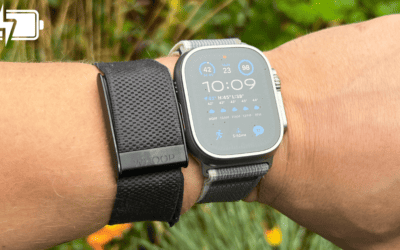Why Are My WHOOP Calories So Low? (The Truth)

You’ve invested in the WHOOP strap, you’ve done your workouts, and you’re eager to see the calorie burn data.
But wait…”why are my WHOOP calories so low? I thought these were supposed to be the pinnacle of accuracy?”.
The calorie tracking metrics of WHOOP can sometimes appear to be lower than what you might expect or get from other fitness trackers, which can be a nuisance to fitness enthusiasts.
This article will help you understand why the calories may be reading so low, and what you can do to fix it.
Why Are My WHOOP Calories So Low
Your WHOOP calories are so low because the WHOOP strap often underestimates calories by approximately 10-20%.
This discrepancy is due to WHOOP’s unique algorithm that factors in multiple variables like heart rate variability, resting heart rate, and sleep quality.
Unlike other trackers, such as the Apple Watch that overestimates by 20%, WHOOP took a more conservative approach.
While the device is generally accurate with other metrics, its calorie counting can sometimes cause concern, and we don’t blame you.
How Does WHOOP Calculate Calories
WHOOP calculates calories burned using a proprietary algorithm that factors in various physiological markers.
This algorithm is unknown to the public. However, we do know that heart rate variability, resting heart rate, and your overall activity level are some of the primary metrics it considers.
For a more comprehensive explanation, check out our article on the accuracy of WHOOP calorie counting.
How to Find How Many Calories You Burn With WHOOP
If you’re concerned about the low calorie counts you’re seeing, there are some things you can do to get a more accurate calorie reading. But keep in mind that there is only so much you can do.
A lot of the accuracy is dependent on WHOOP’s algorithm. Here are some things you can do to get an accurate total calories burned:
1. Wear your WHOOP properly
The first thing you can do is simply make sure you’re wearing the WHOOP correctly. Per WHOOP, your strap should rest 1 inch above the bone on your wrist.
Make sure that it is not too tight where it’s pressing into your skin, but it also shouldn’t be sliding around. Aim for a nice comfortable fit that is snug.
2. Manually Calculate
Another thing you can do is manually calculate your calories. There are two ways of doing this: the hard way, and the lazy way, and the comparison method.
The Harder, More Accurate Way
The hard way involves tracking your caloric intake for one month, then measuring that against your WHOOP calories, and finding the discrepancy.
Once you know how far off your WHOOP is, you can manually adjust your calories moving forward.
For example, if your WHOOP says you burn 2000 calories a day, and you eat 2,000 calories a day, but you lost 2 pounds in a month, that means the WHOOP underestimated 7,000 calories (3500 calories per pound of fat).
Now, take 7,000 calories and divide it by 30 days, and you find out your WHOOP is underestimating your calories by 233 per day.
So, if the WHOOP says you burn 2,000 a day, you’re actually burning 2,233 a day, which fits into the 10% underestimation we talked about.
The Easier, Less Accurate Way
The easy way is to add 15% of the total calories burned. This is because WHOOP calories are roughly 10-20% lower than the actual calories you burn.
To find your number, take the calories you burned for the full day, and multiply it by 1.1 (for 10%), 1.15 (for 15%) or 1.2 (for 20%). This will give you a better estimation of how much you actually burned.
The Comparison Method (Requires Apple Watch)
This only applies if you also have an Apple Watch.
Since we know the Apple Watch overestimates by 20%, and the WHOOP underestimates by about the same, you can add both of the total calories together and divide by 2.
For example, if your Apple Watch says you burn 2600 calories, and your WHOOP says your burn 2000:
2600 + 2000 = 4600.
4600 / 2 = 2300.
2300 is going to be a much more accurate estimation.
Related Articles:
WHOOP Files Patent for Pressure Strap: Is Hypoxic Training Coming?
WHOOP, a leader in the data-driven wearable technology sector, quietly filed an innovative patent a couple years ago, successfully avoiding any significant media attention. The patent, titled Pressure Sensitive Strap for Wearable Electronics, introduces a cutting-edge...
I tested the WHOOP 4.0 vs Apple Watch Ultra 2 battery in real-world conditions – and one lasted way longer
Battery life is major factor in play when deciding which fitness tracker a consumer should go with. So how do two of the leading brands, WHOOP and Apple Watch, fare in this department? I tested the Ultra 2 and WHOOP 4.0 battery life in a head-to-head battle over the...
Can You Wear Whoop and Apple Watch Together? (2023)
Some people find themselves drawn to both WHOOP, for its recovery insights, and Apple Watch, known for its intuitive tech features and connectivity capabilities. As they each offer unique functionalities, is it worth wearing both of them? In this article, we'll...

by Ken Lynch
Ken is a Technologist, Healthcare Data Analyst, and the owner and sole contributor to The Wearable Guy.



